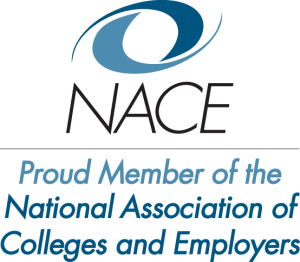Making The Connection From Major To Career
“What are you going to do with that?”: Making the connection from major to career.
It’s a question that all liberal arts majors–and even some students in more practical fields of study–hear frequently. “What are you going to do with that?”
It’s also a question that can induce panic and make students second-guess their futures. Are they wasting time pursuing a subject they’re passionate about but that has no real career prospects? Should they switch to something with a more obvious major-to-career pathway? If your school is lucky enough to have PathwayU to help your students cope with that question, you are in great shape. But what if you don’t?
As career educators, we know that the path from college to career is rarely a straight line and that liberal arts majors have exactly the skills employers want from new grads. But how do you help a student who’s feeling pressure from family or friends to have it all figured out? The answer: Planned serendipity and parallel career paths.
How do you help a student who’s feeling pressure from family or friends to have it all figured out? Find the answer in @Pathway_U’s blog:Click to TweetPlanned serendipity
One of my early career mentors introduced me to the idea of “planned serendipity,” or the belief that good luck has a greater chance of finding us if we open ourselves up to plenty of opportunities for it to cross our paths. Putting yourself out there, networking, going to that event, showing up: These are the actions that allow luck and chance to enter our lives and propel us forward in new directions.
Encouraging students–especially liberal arts students–to open themselves up to chance is critical to helping them understand how their major can connect to many other subjects and potential careers. Volunteering in the community, attending networking events, and applying for internships and student jobs are all ways to allow for those chance connections that will help them start to form a career path connected to their interests.
These opportunities are even more impactful when students undertake them with purpose. It’s one thing to complete an internship; it’s another to take the time to understand what you’re hoping to get out of an internship and to reflect on the experience after.
Tools like PathwayU can help students take the time and space to reflect on what they hope to get out of their college experiences and how these experiences can connect to their interests and goals long term. This provides an important framework for the experience itself, helping students to make the connection between what they’re learning and how it can help them in a career.
Parallel career paths
Planning for parallel career paths is something many career coaches recommend. Instead of talking to students about a “Plan A” and “Plan B,” using the term “parallel career paths” reinforces the idea that you can have various different yet equal paths forward into a purposeful career.
Encouraging #Students to open themselves up to chance is critical to helping them understand how their #Major can connect to many other subjects and potential #Careers. Find out more from @Pathway_U:Click to TweetThis concept can be especially useful for liberal arts majors who may not have a specific career in mind, as it’s a way to “try out” several possible career paths without over-committing to one.
But what does it mean to map and plan parallel career paths?
First, the student will need to do some research and reflection to identify a few potential careers they would have an interest in pursuing. Once again, tools like PathwayU can really set the stage for this kind of reflection–and, as a bonus, PathwayU can even connect students to specific career suggestions based on their assessment results, allowing them to narrow down their options much more quickly than they might otherwise.
Ideally, the careers the student chooses shouldn’t be too wildly different from one another. Even if they belong to different industries, they should still speak to the student’s core interests, strengths, and values.
Once the student has identified those two or three potential careers that speak to similar interests, strengths, and values, they can begin planning their serendipitous moments. What internships, volunteer opportunities, networking events, academic minors, and professional certifications could help them move forward in each of the potential careers they’ve chosen? Where are the intersections between these careers, and what kinds of experiences might open new doors in each field?
Paying attention
At the end of the day, the most important skill we can teach our students is how to pay attention. Opportunities for growth can come from anywhere–but we have to be able to recognize those moments and be ready to seize them.
When a student begins to understand the multitude of opportunities before them, they can begin to let go of the fear of uncertainty sparked by that ever-present question: “What are you going to do with that?”
And if they have access to PathwayU, their answer will not only be because they know that they have so many ways to answer that question, but they also know their choice is steeped in the sense of purpose and meaning.
Jen Gose is an education industry thought leader. A former higher ed administrator with experience in career services and advising, she brings a unique “from the trenches” point of view when writing about many of the challenges our educators face today.
-1.png?width=288&height=67&name=PathwayU_PGLogo%20(1)-1.png)











